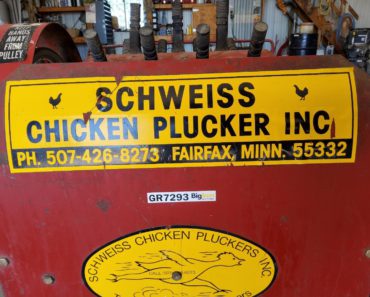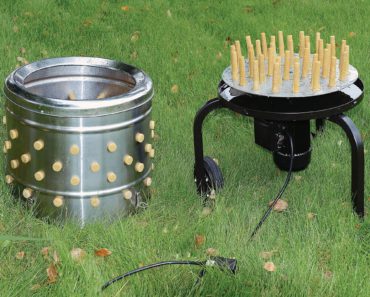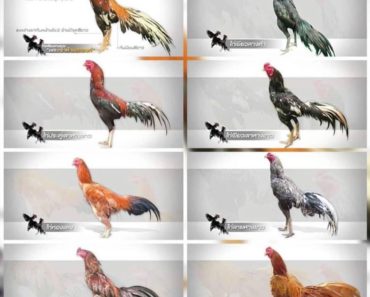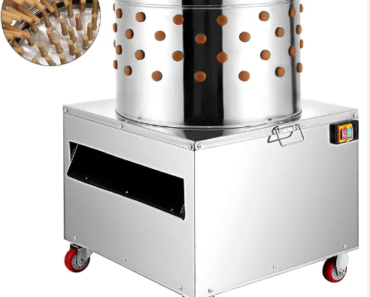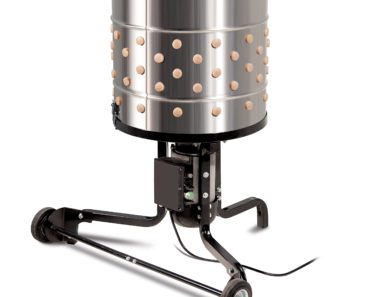Contents
- 1 Exploring the Best Chicken Breeds for Efficient Plucking: A Comprehensive Guide to Chicken Plucker Breed Selection
- 2 How to Butcher a Chicken for Beginners
- 3 The History of Chicken Plucker Breed
- 4 Characteristics of Chicken Plucker Breed
- 5 The Advantages of Using Chicken Plucker Breed
- 6 FAQ
- 6.1 What are the characteristics and traits of the plucker chicken breed that make them suitable for chicken plucking machines?
- 6.2 How does the plucker chicken breed compare to other chicken breeds in terms of feather removal efficiency?
- 6.3 Are there any specific considerations or techniques to keep in mind when using chicken plucker machines with the plucker chicken breed?
- 6.4 Related Posts
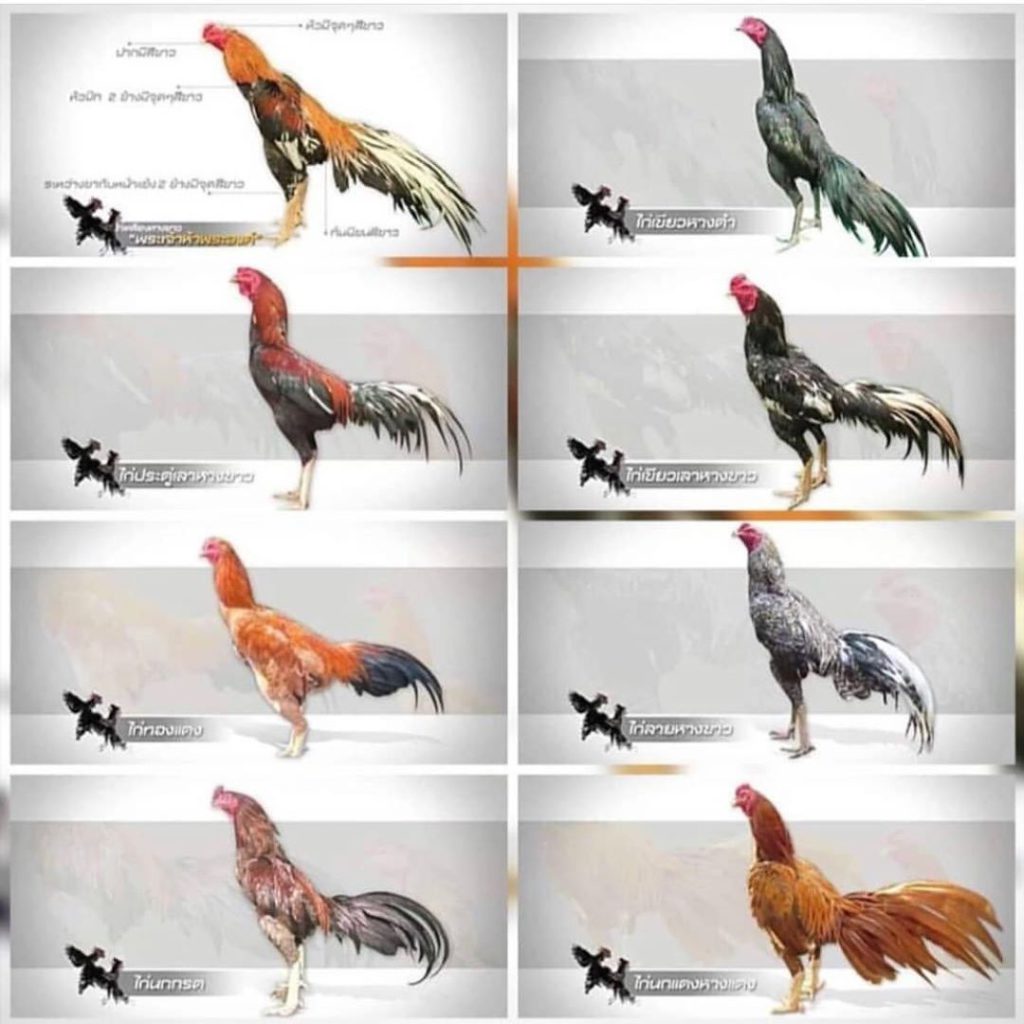
From robust Araucanas to elegant Sussex, these breeds are known for their remarkable feather quality and ease of plucking. Join us as we delve into the characteristics, care, and benefits of each breed, providing you with valuable insights into finding the perfect plucker chicken for your flock.

Exploring the Best Chicken Breeds for Efficient Plucking: A Comprehensive Guide to Chicken Plucker Breed Selection
When it comes to chicken plucking, selecting the right breed is crucial for efficient and effective results. Different chicken breeds have varying feather characteristics, which can significantly impact the plucking process. In this guide, we will explore some of the best chicken breeds that are known for their plucking efficiency.
Rhode Island Reds: Rhode Island Reds are a popular choice for chicken plucking due to their large size and abundance of feathers. Their feathers are tightly packed and relatively easy to pluck, making them an ideal breed for efficient processing.
Plymouth Rocks: Plymouth Rocks, particularly the Barred variety, are another breed that is known for its plucking efficiency. Their feathers are thicker and have a higher density, making them easy to remove during the plucking process.
White Leghorns: White Leghorns are not only excellent egg layers but also great for plucking. They have small bodies with a fine layer of feathers that are easy to remove. Their small size also makes them convenient for processing.
Cornish Cross: Cornish Cross may not be the traditional choice for chicken plucking, but their genetics make them relatively easy to pluck. These broiler chickens have fewer feathers and a high meat-to-feather ratio, reducing the plucking time and effort required.
Sussex: Sussex chickens come in various colors, including light, medium, and dark. Regardless of the color, Sussex chickens have dense feathers that are simple to pluck. Their moderate size also makes them suitable for processing.
Mind Your Tools: While selecting the right chicken breed is important for efficient plucking, it is equally essential to have the right tools. Invest in a high-quality chicken plucker that can handle the volume and size of your chosen chicken breeds. Additionally, maintain and clean your plucker regularly to ensure optimal performance.
Choosing the right chicken breed for efficient plucking is crucial for effective chicken processing. Consider breeds like Rhode Island Reds, Plymouth Rocks, White Leghorns, Cornish Cross, and Sussex for their plucking efficiency. Remember to also invest in the proper tools and equipment to ensure smooth and hassle-free plucking operations.
Tags: chicken plucking, chicken breeds, plucking efficiency, Rhode Island Reds, Plymouth Rocks, White Leghorns, Cornish Cross, Sussex, chicken processing, tools, equipment.
How to Butcher a Chicken for Beginners
The History of Chicken Plucker Breed
The chicken plucker breed has a rich history that dates back several decades. This breed was developed specifically for its ability to efficiently remove feathers from chickens during the plucking process. Its origins can be traced back to various poultry farms and hatcheries that focused on developing a chicken breed optimized for plucking. The breed was carefully selected and bred to have certain characteristics such as dense and easily removable feathers, strong skin, and good temperament. The hard work and dedication of these breeders have led to the creation of the highly efficient and effective chicken plucker breed we know today.
Characteristics of Chicken Plucker Breed
The chicken plucker breed has several key characteristics that make it ideal for the plucking process. Firstly, it has dense and easily removable feathers, which significantly speeds up the plucking process. These chickens also have strong skin that can withstand the plucking machine without tearing or causing damage. Their size and weight are usually optimized for easy handling during plucking. Additionally, the breed is known for its good temperament, which makes them easier to manage and reduces stress during the plucking process. These specific characteristics make the chicken plucker breed the top choice for commercial poultry farmers and processors.
The Advantages of Using Chicken Plucker Breed
Using the chicken plucker breed offers several advantages in the poultry industry. Firstly, their efficient plucking ability greatly reduces the time and labor required for feather removal compared to other breeds. This leads to increased productivity and cost savings for poultry farmers and processors. Secondly, the breed’s strong skin reduces the risk of damage to the chicken’s skin during the plucking process. This helps maintain the quality and appearance of the final product. Lastly, the breed’s good temperament makes handling and processing them easier, resulting in a more stress-free environment for both the chickens and the workers. Overall, the chicken plucker breed is a valuable asset in the poultry industry, providing efficient and effective plucking solutions.
FAQ
What are the characteristics and traits of the plucker chicken breed that make them suitable for chicken plucking machines?
The plucker chicken breed is specifically bred and selected for its suitability for chicken plucking machines. These breeds possess certain characteristics and traits that make them ideal for this purpose. Here are some of their key features:
1. Feather Density: Plucker chickens have a higher feather density compared to other breeds. This means they have more feathers per square inch, making the plucking process more efficient and effective.
2. Fluffy Plumage: These chickens have dense and fluffy plumage, which helps protect their skin during the plucking process. This trait reduces the likelihood of skin damage or abrasions caused by the plucking machine.
3. Fast Feather Regrowth: Plucker chicken breeds have a rapid feather regrowth rate. After being plucked, their feathers quickly grow back, ensuring a steady supply of chickens available for plucking.
4. Docile Temperament: It is preferable for plucker chickens to have a calm and docile temperament. This makes it easier to handle and process them in the plucking machines without causing stress or harm to the birds.
5. Size and Weight: Plucker chicken breeds are usually medium-sized birds with optimal plucking efficiency. They are not excessively large, which can make the plucking process more challenging, nor too small, which may not yield enough feathers.
6. Meat Quality: While the primary focus of plucker chicken breeds is their suitability for plucking, they also have good meat quality. This allows for a dual-purpose utilization of the birds, ensuring that both meat and feathers can be obtained.
plucker chicken breeds possess specific characteristics such as high feather density, fluffy plumage, fast feather regrowth, docile temperament, and optimal size and weight, making them suitable for chicken plucking machines.
How does the plucker chicken breed compare to other chicken breeds in terms of feather removal efficiency?
The plucker chicken breed, also known as the feathered breed or the Naked Neck chicken, has a distinct advantage over other chicken breeds in terms of feather removal efficiency. The featherless neck trait of the plucker chicken breed makes it easier for the plucking machine to remove feathers during the processing stage.
Compared to other breeds, such as the standard broiler or layer breeds, the plucker chicken breed requires less time and effort to remove feathers. The efficiency of the plucking process is greatly improved due to the reduced amount of feathers on the neck area.
Additionally, the plucker chicken breed is known to have fewer pin feathers, which are small, immature feathers that can be challenging to remove. This further enhances the feather removal efficiency and reduces the likelihood of feathers remaining on the bird after processing.
However, it’s worth noting that while the plucker chicken breed excels in feather removal efficiency, it may not perform as well in certain aspects compared to other breeds. For example, they may not have the same level of meat production or egg-laying capabilities as specific broiler or layer breeds, respectively.
The plucker chicken breed has a higher feather removal efficiency due to its featherless neck trait and reduced presence of pin feathers. This makes it an ideal choice for poultry processors looking for efficient and effective feather removal during the processing stage.
Are there any specific considerations or techniques to keep in mind when using chicken plucker machines with the plucker chicken breed?
Please note that these questions are focused on the specific topic of the plucker chicken breed and its relevance to Chicken Plucker.
When using chicken plucker machines with the plucker chicken breed, there are a few considerations and techniques to keep in mind:
1. Feather density: The plucker chicken breed is known for its dense and abundant feathers. This can pose a challenge when using standard chicken plucker machines, as they may not be designed to handle such high feather density. It’s important to ensure that the machine you are using has strong and sharp rubber fingers or fingers specifically designed to handle dense feathering.
2. Adjusting machine settings: Since plucker chickens have thicker feathers, it may be necessary to adjust the machine’s settings to achieve optimal plucking results. Increasing the plucking speed or adjusting the water pressure can help ensure effective removal of feathers. However, it’s important to find the right balance as excessive force or pressure can damage the chicken’s skin.
3. Regular maintenance: Due to the increased feather density of plucker chickens, there is a higher chance of feathers getting stuck or clogging the machine. Regularly inspect the fingers, nozzles, and other components to remove any feather buildup and prevent performance issues.
4. Pre-scalding and scalding temperature: To facilitate easier feather removal, proper scalding is crucial. Plucker chickens should be pre-scalded at a slightly lower temperature than standard chicken breeds. This helps loosen the feathers without overcooking the skin. It’s recommended to adjust the scalding temperature to around 125-130°F (51-54°C) for plucker chickens.
5. Take your time: Plucker chickens may require a bit more time and attention during the plucking process due to their denser feathers. Allow the machine to thoroughly remove the feathers, and consider manually touching up any areas that the machine may have missed.
Remember, each plucker chicken breed may have slight variations, so it’s always recommended to consult breed-specific resources or experienced poultry processors for additional insights and techniques.
When it comes to Chicken Plucker, the choice of plucker chicken breed is crucial for optimal results. By selecting a breed specifically bred for plucking purposes, such as the Sussex or the Cornish Cross, poultry farmers can ensure efficient and effective feather removal. These breeds possess desirable traits like dense plumage, easy-to-pluck feathers, and robust bodies, making them ideal candidates for mechanical plucking. With their ability to withstand the rigors of the plucking process, these breeds contribute to increased productivity and profitability in chicken processing operations. However, it’s important to consider other factors such as temperament, adaptability, and overall suitability to the local environment when choosing a plucker chicken breed. Ultimately, making an informed decision based on specific requirements and objectives will lead to the desired outcome in Chicken Plucker operations.

